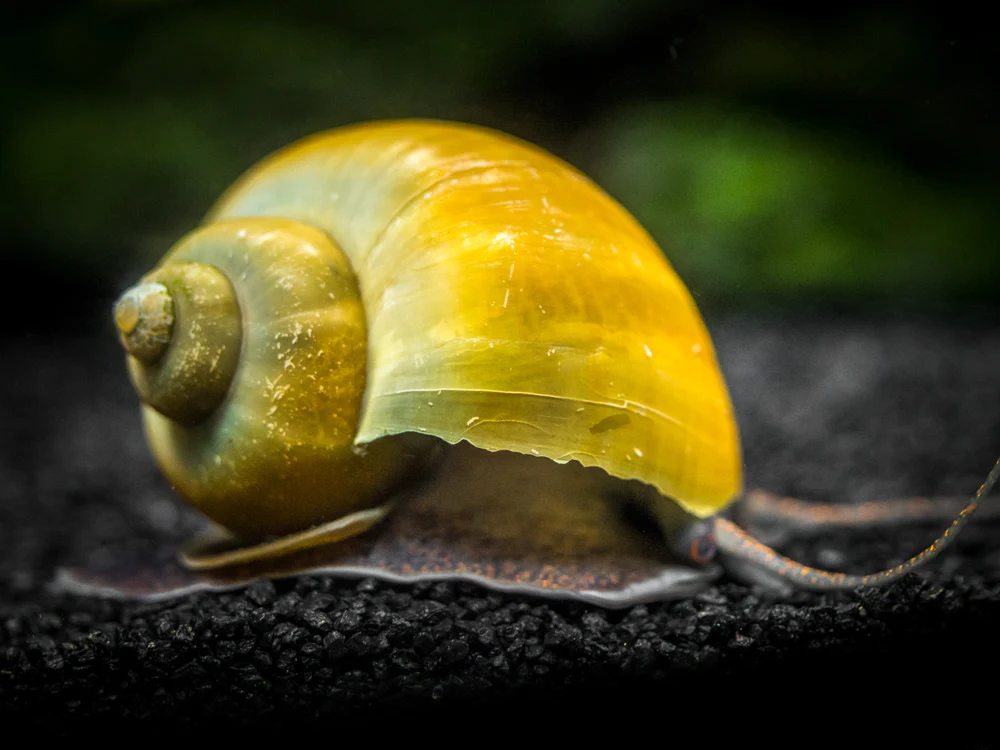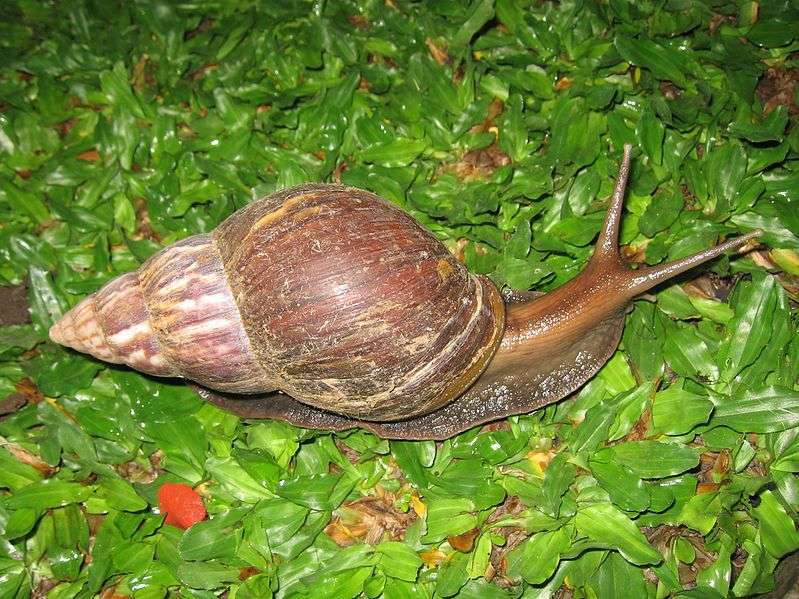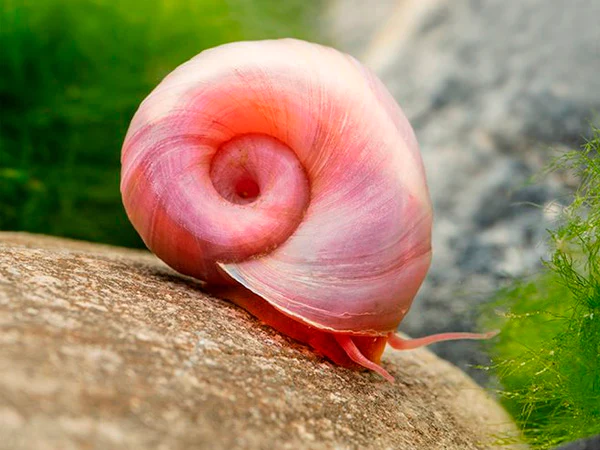
Description
Size: Female mystery snails are slightly larger than men, and adult sizes can reach 2 inches in diameter.
There are various sorts and hues of mystery snails. In addition to the standard brown, black, ivory, and gold varieties, they occur in several species. One of the most prevalent examples of such is the Albino mystery snail. They look paler and have body stripes that are either gold or brown.
The mystery snails have a head that seems like it has two big tentacles on top of it. These serve as sense organs in addition to contributing to their anatomy. They aid in spotting potential threats and even nearby food supplies. Their eyes control mobility and keep an eye on any nearby light sources.
Origin
Freshwater snails like these are most frequently found in South America. Countries like Bolivia, Brazil, and Peru are rife with them.
These little creatures frequently can be seen foraging throughout the tank in search of plant materials because they are vegetarians. Swamps, rivers, and even ponds are among the numerous bodies of water where they can be found.
Behavior
Invertebrates called mystery snails live in peace and get along well with members of their own species. The snails are sluggish, solitary, and spend the most of their time at the bottom of the tank eating algae, debris, or unfinished food.
One of the most fascinating leaping behaviors of mystery snails is when they climb up the tank walls, release their hold, and glide back down to the bottom. The mysterious snail closes its operculum, or trap door, and escapes within its shell when it feels threatened.
Keeping as Pet

Habitat
In order to have lots of food to eat, these snails enjoy having a lot of flora in their tank. They will leave the water if there isn’t enough food in the tank, therefore giving a lot of food and maintaining a tight lid on the tank are crucial.
While having a lot of vegetation on the tank’s bottom is essential for the snails to have food, they also require sand, pebbles, or gravel so they can move around with ease. As long as the snail can move about freely, it doesn’t matter what kind of substrate is utilized in a tank.
Make sure not to overcrowd a tiny tank like this if you decide to retain one. It is good to keep 1-2 snails per 5–10 gallons.
Water Conditions
When it comes to caring for mystery snails, you need pay special attention to the water parameters. You must take this seriously because these tiny animals might be quite sensitive to changes in level. Testing your water frequently (and using a reliable testing kit) is the best method to make sure of this. The first step in preserving these wonderful creatures is having the appropriate knowledge.
The ideal water conditions are following:
Water temperature: 68°F to 84°F
pH levels: 7.6 to 8.4
Water hardness: 12 to 18 kH
Diet and Feeding
However, algae wafers, algae pellets and blanched vegetables like zucchini, lettuce and cucumber can be used to augment the diet of mystery snails, which happily scavenge on algae and leftovers in the water. Based on the amount of algae in the tank, adjust the amount of additional food.
Don’t overfeed mysterious snails because doing so can harm their health and degrade the water’s quality.
Tank mates
Some typical tank mates for mystery snails are tetras, killifish, otocinclus, ghost shrimp, amano shrimp, nerite snails, cory catfish and red cherry shrimp.
Table





